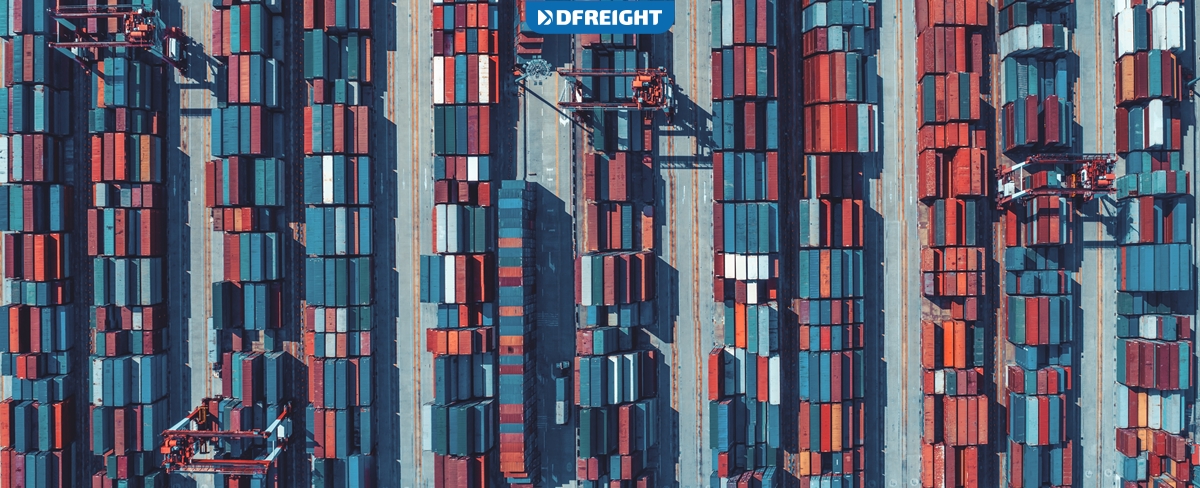You will likely use a container freight station (CFS) if you need to ship containers. A CFS is a facility where containers are loaded and unloaded from trucks or trains. They are also sometimes called container terminals or container yards. CFSs are an essential part of the global supply chain. This blog post will explain everything you need to know about CFSs, including their work and services.
Table of Contents
What Is a Container Freight Station?
A container freight station (CFS) is a facility where consolidation and deconsolidation of cargoes take place. CFSs are operated by freight forwarders, shipping lines, and third-party logistics providers. These stations are located in major ports and cities around the world.
Container freight station provide a number of services, including the following:
- Receiving and delivering cargoes from/to shippers and consignees
- Handling and storage of cargoes
- Loading and unloading of cargoes onto/from trucks, trains, and vessels
- Documentation and customs clearance
The main purpose of a container freight station is to consolidate small shipments into larger ones in order to minimize transportation costs. For example, if a shipper has ten containers of goods to be shipped from China to the United States, it would be more cost-effective to consolidate these into one shipment rather than sending them as ten separate shipments.
CFSs also provide a valuable service for shippers who do not have their own warehouses or storage facilities. These shippers can use the CFSs for the temporary storage of their cargoes until they are ready to be shipped. This is known as less-than-truckload (LCL) shipping.
In addition to consolidation and storage, CFSs also offer a range of other services, such as documentation, customs clearance, and transportation. These services are typically provided by freight forwarders, shipping lines, and third-party logistics providers.
CFSs are often located near ports, airports, and rail hubs. They are typically operated by logistics service providers, steamship lines, railroads, or trucking companies. This proximity allows for quick and efficient movement of cargoes.
The size of a container freight station can vary depending on the needs of the shippers and consignees. However, most CFSs are large facilities with a lot of storage space, as well as container loading and unloading equipment. The size and capacity of CFSs vary depending on the local market’s needs. Some CFSs are extensive facilities that accommodate hundreds of containers, while others are smaller operations that only handle a few containers daily.
CFSs typically offer various services, such as container storage, repair, and cleaning. They may also offer value-added services such as cargo insurance, customs clearance, and freight forwarding.
The fees charged by container freight station vary depending on the services provided and the facility’s location. In some cases, CFSs may offer discounts for volume customers or customers who use multiple services.
Container freight stations play a vital role in the global economy by facilitating the movement of goods between different modes of transportation. CFSs are an essential part of the intermodal freight transport system, providing storage, handling, and other services for containerized cargo.
The Process of Using a Container Freight Station
When using a container freight station (CFS), there are a number of steps that must be followed in order to ensure a smooth and efficient process. These steps are as follows:
- The shipper delivers the cargo to the CFS.
- The CFS receives the cargo and checks it in.
- The CFS consolidates the cargo with other shipments.
- The CFS loads the consolidated cargo onto a truck, train, or vessel.
- The CFS provides documentation and customs clearance for the shipment.
- The CFS delivers the shipment to the consignee.
The first step is for the shipper to deliver the cargo to the CFS. The CFS will then receive the cargo and check it in. Once the cargo has been checked in, the CFS will consolidate it with other shipments. This is done in order to minimize transportation costs.
The next step is for the container freight station to load the consolidated cargo onto a truck, train, or vessel. The CFS will then provide documentation and customs clearance for the shipment. The final step is for the CFS to deliver the shipment to the consignee.
A container freight station (CFS) is a facility where containerized cargo is unloaded from incoming international ships and reloaded onto outbound trucks or trains. The CFS is responsible for clearing the cargo through customs and collecting the required documentation for export.
The first step in using a container freight station is to file a notice of arrival (NOA) with the terminal operator. The NOA provides the CFS with the ship’s estimated time of arrival, the number of containers to be unloaded, and the consignee’s name and address.
Once the ship has arrived at the terminal, the CFS will begin to unload the containers. The containers will be placed on chassis and moved to the designated CFS area. Once all of the containers have been unloaded, the CFS will send out a notice of departure (NOD) to the terminal operator.
The next step is to prepare the containers for export. The CFS will weigh and measure the containers and take photographs of the cargo. The CFS will also prepare the required documentation for export, including the bill of lading and the manifest.
Once the containers have been prepared for export, they will be loaded onto trucks or trains and transported to the port of departure. The CFS will provide the trucking company or railway with the required documentation for export.
The CFS is responsible for ensuring that the containers are loaded onto the correct vessel. The CFS will prepare a stowage plan for the vessel and provide it to the terminal operator. The terminal operator will use the stowage plan to load the containers onto the vessel.
Once the vessel has departed, the container freight station will send a notice of arrival (NOA) to the destination CFS. The NOA will provide the CFS with the vessel’s estimated time of arrival, the number of containers to be unloaded, and the consignee’s name and address.
The CFS will unload the containers from the vessel and place them on chassis. The CFS will then send a notice of departure (NOD) to the terminal operator.
The next step is to prepare the containers for import. The CFS will weigh and measure the containers and take photographs of the cargo. The CFS will also prepare the required documentation for import, including the bill of lading and the manifest.
Once the containers have been prepared for import, they will be loaded onto trucks or trains and transported to the consignee’s premises. The container freight station will provide the trucking company or railway with the required documentation for import.
Conclusion
Container freight stations are essential to the international supply chain and link maritime shipping and land-based transportation. CFSs are located in major ports around the world and play a vital role in the movement of goods between countries.
If you’re looking for a reliable and experienced freight forwarder, look no further than DFreight. We offer a full range of freight forwarding services, and we’re dedicated to providing our clients with the best possible service. Contact us today to learn more about how we can help you with your shipping needs.
FAQs
What is a container freight station?
A container freight station is a facility where cargo is consolidated and de-consolidated from containers.
What services are provided at a container freight station?
container freight station provide a variety of services including container storage, handling, and maintenance; cargo consolidation and deconsolidation; and transportation.
What are the benefits of using a container freight station?
container freight station offer many benefits including cost savings, efficiency, and flexibility.
How does a CFS work?
A container freight station typically has a network of transportation partners that pick up and deliver containers to and from the facility. The container freight station then consolidates or deconsolidates the cargo as needed.
What are the hours of operation for a container freight station?
container freight station typically operate 24 hours a day, 7 days a week.
What safety and security measures are in place at a container freight station?
container freight station have a variety of security measures in place, including security cameras, fences, and gates.
Are container freight station environmentally friendly?
container freight station are typically very environmentally friendly, as they help to reduce traffic congestion and pollution.














